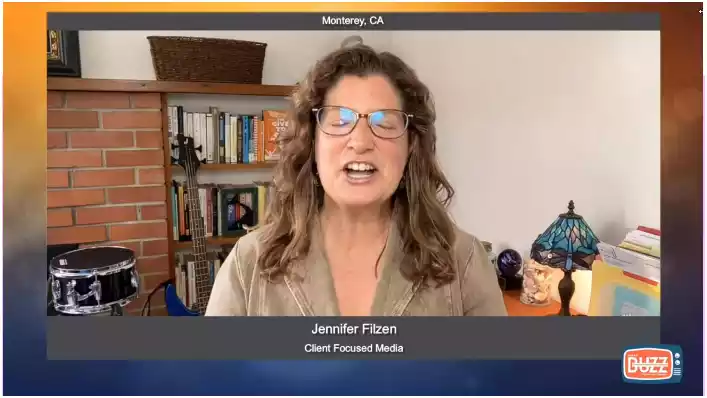Reevaluating Risk Management's Role in Prior Authorization Procedures
Dive into the realm of risk management's role in prior authorization procedures. Delve deeper to discover how mitigating risks shapes the landscape of patient care and administrative efficiency.

Navigating the prior authorization process can be complex, with various requirements and protocols to follow. Let’s delve into what exactly prior authorization entails, exploring its purpose, procedures, and implications for patients and healthcare providers alike.
Let’s delve in!
Table of Contents
Reevaluating Risk Management’s Role in Prior Authorization Procedures
 It might be easy to compare navigating the healthcare system to a challenging game of chess, where every move is carefully considered and the stakes are quite high. At the center of this intricate dance of costs, care quality, and compliance sits the underappreciated but utterly crucial function of prior authorization (PA).
It might be easy to compare navigating the healthcare system to a challenging game of chess, where every move is carefully considered and the stakes are quite high. At the center of this intricate dance of costs, care quality, and compliance sits the underappreciated but utterly crucial function of prior authorization (PA).
PA is both a safeguard and a stumbling block, ensuring patients receive the proper care while effectively managing the financial risks for healthcare providers and insurers. However, PA is becoming a battlefield for healthcare stakeholders due to the increasing complexity of medical treatments and the constant tightening of payment constraints. That’s why intelligent risk management in the PA process is not just a strategic move; it’s an imperative.
In this comprehensive exploration, we dissect the role of risk management in PA, unveiling strategies for success, the tools shifting the landscape, and the inevitable crossroads of technology and human judgment.
Evaluating the Dangers of Antiquated Prior Authorization Methods
Before we can mitigate risks, we must understand them. Traditional PA workflows often resemble a tangle of manual processes, riddled with paperwork delays and the potential for human error. These inefficiencies invite a host of risks that impact the bottom line and patient outcomes alike:
- Financial Loss: Delays and denials in PA approvals lead to unutilized services and foregone revenue.
- Compliance Hurdles: A lack of standardized processes can open the door to regulatory missteps and penalties.
- Operational Impacts: Misrouted faxes, lost documents, and other administrative mishaps result in resource waste and strained provider-payer relationships.
To remain competitive and compliant, healthcare organizations must undertake a thorough risk assessment to pinpoint these vulnerabilities and develop a solid PA risk management plan.
Modernizing with Advanced Data Analytics
Modern technology is the knight’s move healthcare providers need in the quest for efficiency. Advanced data analytics tools can transform risk assessment from a retrospective exercise to a real-time radar, alerting providers to potential PA pitfalls before they derail the patient’s care trajectory:
- Predictive Modeling: Algorithms can forecast the likelihood of PA approval, integrating historical claims data with payer policies.
- Tracking Systems: These systems monitor the status of PA requests, providing dashboards that flag overdue approvals and bottlenecks within the process.
- Performance Metrics: Quantifying and measuring the PA process over time highlights trends, performance variations, and the efficacy of interventions.
While data analytics tools offer significant advantages, they’re not silver bullets.
Effective use of these technologies requires a harmonious blend of IT infrastructure, workflow integration, and staff training. This balancing act determines the success of risk management in PA.
Strategic Alignment Between Payers and Providers

The traditional relationship between payers and providers is often adversarial, with PA intricacies frequently underpinning this tension. However, strategic alignment holds the key to minimizing risks and streamlining the PA process for all parties involved:
- Shared Data Platforms: Collating and sharing appropriate patient and treatment data can preemptively satisfy payer criteria, expediting approvals.
- Collaborative Workgroups: Bringing payer representatives and providers together fosters understanding and the co-design of PA processes that balance coverage restrictions with clinical needs.
- Clear Communication Lines: Established channels for dialogue can quickly resolve disputes or misunderstandings that otherwise stall the approval process.
When payers and providers can operate from a place of mutual understanding and respect, the PA process becomes not a hurdle to clear but a step toward collaborative, efficient, and high-quality care.
I'm very thankful for Portiva who I know is looking after my practice while I'm gone the virtual assistants can manage prescription refills, documents they can triage patients and just kind of answer administrative questions and they can handle a lot on their own. But also, they're very good about contacting me if there's any emergency or anything I need to attend to. So I'm very thankful for Portiva they can help almost any provider almost anywhere and it really allows for some good work-life balance as I'm getting to experience right now at my family farm so I'm very thankful for Portiva and I'm very happy to use their services"

Board Certified Family Medicine Physician

Portiva's Virtual Medical Assistant - I have all the support I need. There's somebody checking my email, any patient messages. Patients are still able to schedule and handle any scheduling issues and any kind of billing that needs to still go through. Portiva hands handles it all for me. I have support i have somebody that I can access 24/7 pretty much. It's all very seamless. If somebody has an emergency or needs a medication called in. I know that the va's at portiva will handle that for me.

Board Certified Family Medicine Physician

The Road Ahead: Balancing Act in Prior Authorization
 The horizon of healthcare in a digitized age is both promising and dangerous. Finding the balance between the dangers associated with technology adoption and its benefits is a challenge shared by all stakeholders:
The horizon of healthcare in a digitized age is both promising and dangerous. Finding the balance between the dangers associated with technology adoption and its benefits is a challenge shared by all stakeholders:
- Continuous Education and Adaptation: With the healthcare landscape in constant flux, ongoing education and training are vital for risk management strategies to remain effective.
- Patient-Centered Technology: The ultimate aim of any technological innovation in healthcare should be to enhance the patient experience, with risk management serving as the means to that end.
- Regulatory Navigation: Adaptable risk management techniques and strategic planning are required to stay abreast of modifications to private insurance, Medicaid, and Medicare regulations.
When approached with care and acumen, prior authorization can be more than a gatekeeper in the healthcare ecosystem. It has the potential to be the keystone of patient safety, financial security, and operational excellence.
In conclusion
The complexity of the healthcare system necessitates a nuanced approach to managing prior authorization risks. By merging robust data analytics with strategic human involvement, healthcare providers can transform PA from an administrative burden into a catalyst for superior care delivery. The key to success lies in proactive risk assessment, continuous improvement, and a deep commitment to aligning the process with the needs of patients, providers, and payers. Thus, let’s seize the chances and challenges that lie ahead and strive toward a time when prior permission will no longer be a barrier to high-quality healthcare but rather an enabler of it.
To learn more about medical procedures that can enhance your medical practice. Discover more about Portiva and unlock a world of possibilities by visiting our homepage today!
- Prior authorization laws
- Benefits and drawbacks of provider prior authorization
- Prior authorization review
- Overcoming prior authorization obstacles
- Managing authorization denials
- Patient guide to prior authorization
- Prior authorization appeals
- Administrative processes in prior authorization
- Contribution of preauthorization solutions in healthcare
- Outsourcing prior authorization services
- Value-based care and preauthorization dynamics
- Prior authorizations with remote medical assistants
- Minimizing prior authorization disputes
- Prior authorization policy changes for healthcare providers
- Technological compatibility in prior authorization
- Global best practices in prior authorization
- Data security in prior authorization
- The advantages of electronic prior authorization
- Balancing patient care and legal requirements in prior authorization

